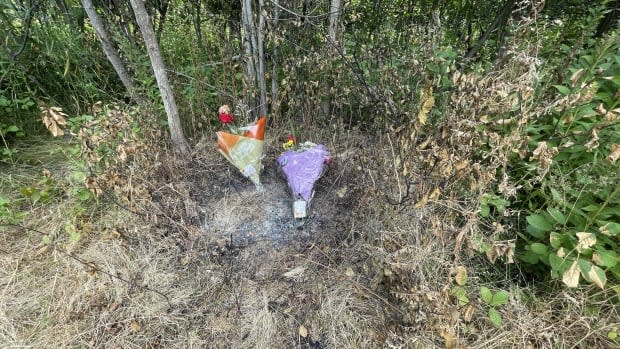First responders in Sherbrooke, Que., apologize after mistaking fire victim for mannequin

WARNING: This story contains disturbing details.
The heads of the police and fire departments in Sherbrooke, Que., held a sombre news conference Thursday afternoon, apologizing and then explaining the circumstances that led them to mistake a woman's burnt body for a mannequin before disposing of it in a dumpster at a police station.
Details of the mishandled remains emerged Thursday morning, nearly a week after the events took place, prompting the first responder services to address reporters Thursday afternoon in the Eastern Townships city about 150 km southeast of Montreal.
Danny McConnell, the Sherbrooke police chief, said on July 23 at around 10 a.m. firefighters received a call about a small brush fire near a factory on Cabana Street.
"When they arrived, witnesses declared that someone had lit a silicone mannequin on fire," McConnell said, adding that, at that point, firefighters requested assistance from police.
"After discussions between the two departments, it was agreed that the mannequin would be disposed of in the container at the Sherbrooke police service, which cannot be accessed by members of the public."
Four hours after firefighters did so, at 2:15 p.m., a man filed a missing person report for his partner. Police then tracked the woman's cellphone signal to her car, which was parked on Cabana Street, near the site of the fire.
"A police officer who intervened earlier raised the coincidence insightfully," McConnell said. Police retrieved the so-called mannequin from the container and were able to identify it as the body of the missing woman.

'We are obviously sorry'
"We are obviously sorry about this situation and rest assured the family is being advised about every key detail of this investigation," McConnell said. "Our hearts are with the family, her partner and the kids in this very tragic situation."
McConnell said Sherbrooke police are now assisting the coroner's office in its investigation, and that the Crown prosecutor's office and Quebec's police watchdog, the Bureau of Independent Investigations (BEI), have been consulted.
On the day it happened, last Friday, Sherbrooke police told Radio-Canada that officers had been deployed at the corner of Roy and Cabana streets in connection with a missing person's report. There had been no police spokesperson on duty at the time.
Stéphane Simoneau, the head of Sherbrooke's fire department, said he wanted to address the public to rectify "a lack of transparency."

"I'm quite stunned by this news and I can say that my entire team, the entire department, as well as those who were there that day, are in shock," Simoneau said, adding he still had questions about what happened.
Simoneau said he is also concerned about the psychological impacts the disturbing situation had on first responders.
"People were overcome by certain emotions, so we have to manage that situation in order to stabilize our teams, psychologically, and that's what we've been doing," he said.
McConnell and Simoneau declined to answer questions from reporters.
It's still unclear how the woman died, but McConnell qualified her death early on in the news conference as "suspicious."
How could this mistake happen?

Dr. Robert Nicholson, an anatomical pathologist at the Granby Hospital in the Eastern Townships, says there are scenarios where it wouldn't be unreasonable to mistake a burnt body for a burnt mannequin.
Nicholson explained that because the human body is composed of about 60 per cent water, it can lose a lot of weight if it is severely burned.
"So, a 150-pound person would be about 60 pounds," Nicholson told CBC in an interview.
"If somebody is a burn victim and most of the water is gone, then there is nothing but the results of the burn. It doesn't look like a normal person and it doesn't feel like a normal person."
Nicholson said he didn't know the specific details or circumstances of the case, but that he could imagine a scenario where if someone were to think it were a mannequin initially, "there's nothing to tip them off otherwise … without a thorough investigation or looking very closely."

 Yahoo Movies
Yahoo Movies 